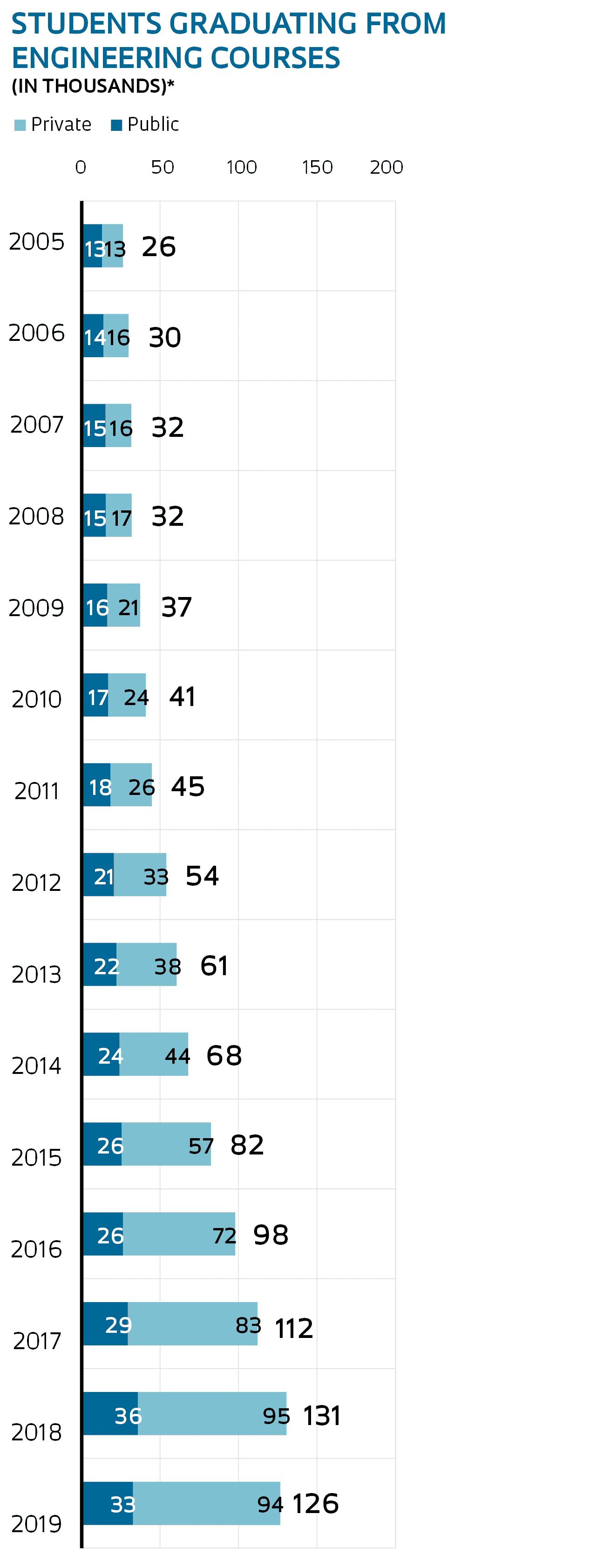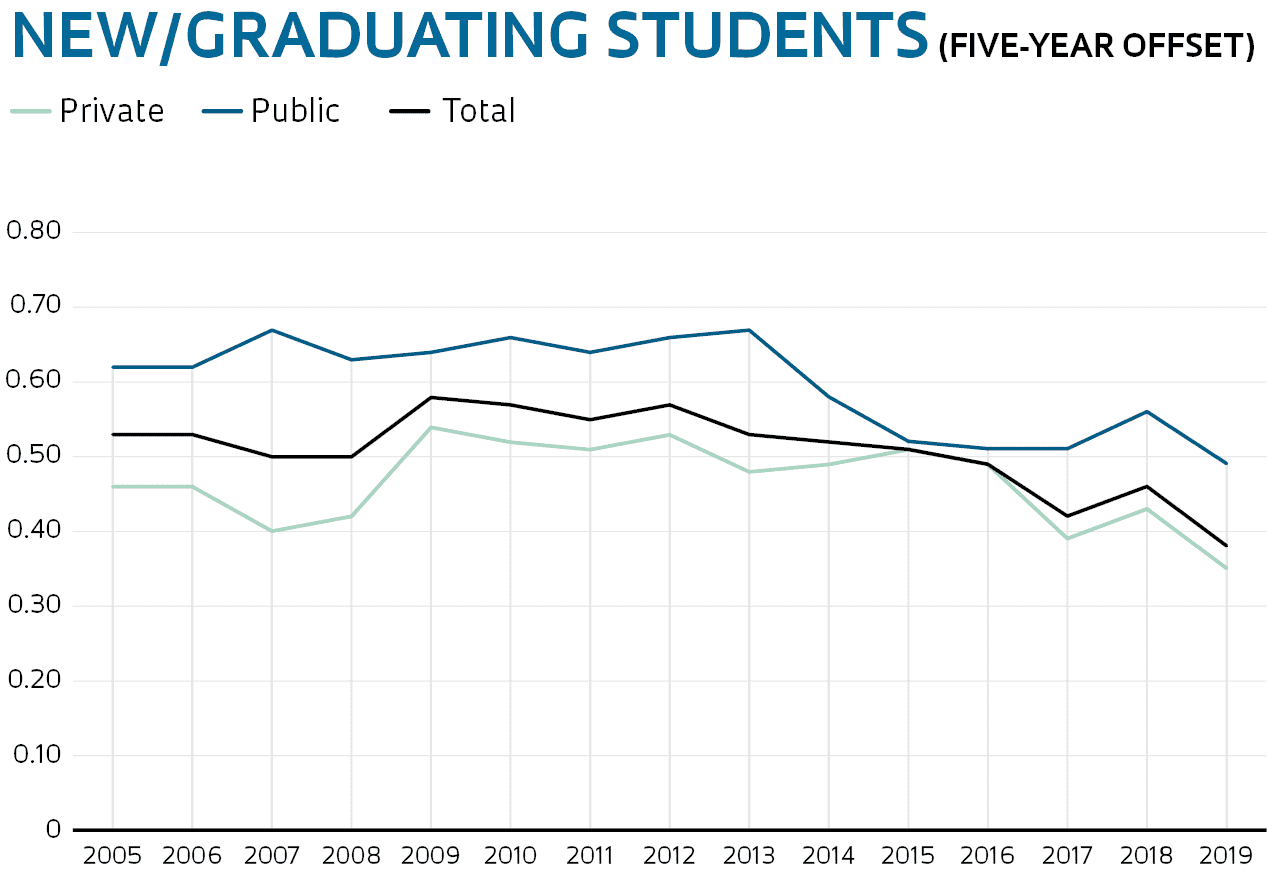
- Number of new students fell by 17% between 2018 and 2019 to 39% below its peak in 2014
- Between 2014 and 2019, there was a decline of 48% at private universities and 3.6% at public universities

- The number of graduating students fell by 3.2% between 2018 and 2019, the first drop since 1996
- The decrease was greater among public universities, at 8.6%. In the private sector, it was 1.2%
- The number of students graduating in 2019 (126,460) represented 10.1% of the total in the year, a small drop from 10.3% in 2018

- The ratio of new graduates to new students, offset by five years, which is the amount of time typically taken to complete an engineering degree, is an indicator of the system’s efficiency
- The graph shows that this indicator was 0.38 across all courses, 0.49 in the public sector, and 0.35 in the private sector for the year 2019 (ratio of students graduating in 2019 to new students enrolling in 2014)
- In the public system, there was a decrease from 0.62 in 2005 to 0.49 in 2019, with a peak value of 0.67 achieved in 2007 and 2013. In the private sector, after hitting 0.54 in 2009, the value fell to 0.35 by 2019. Overall, the indicator decreased from 0.53 to 0.38 in the period, having peaked at 0.58 in 2009
*The total values in the first two graphs may differ from the sum of the public and private values due to rounding
Methodology: Courses specifically in engineering fields, as recognized by the Brazilian Ministry of Education (MEC), were considered. Transferring students were not included as new students. The efficiency indicator used a five-year offset: for the year N, the ratio between the number of students graduating was calculated against the number of new students enrolled in year N-5. Prepared by the FAPESP Studies and Indicators Team.
Source: Summaries and Microdata from the Higher Education Census, INEP/MEC.
Republish
